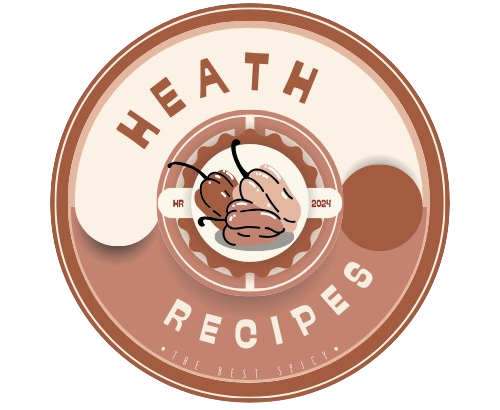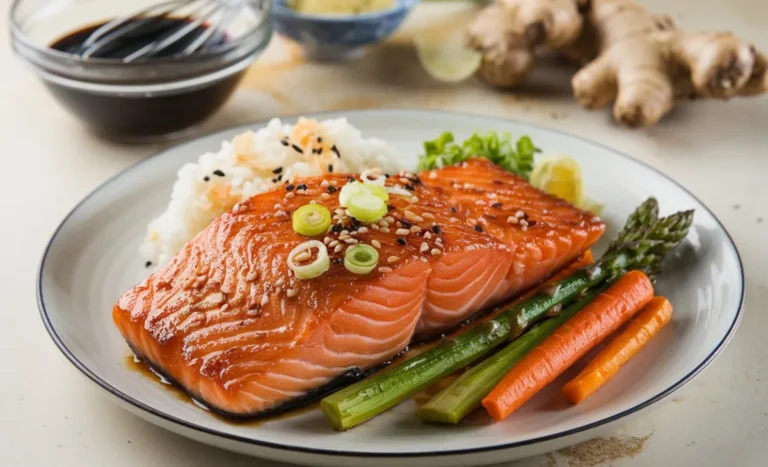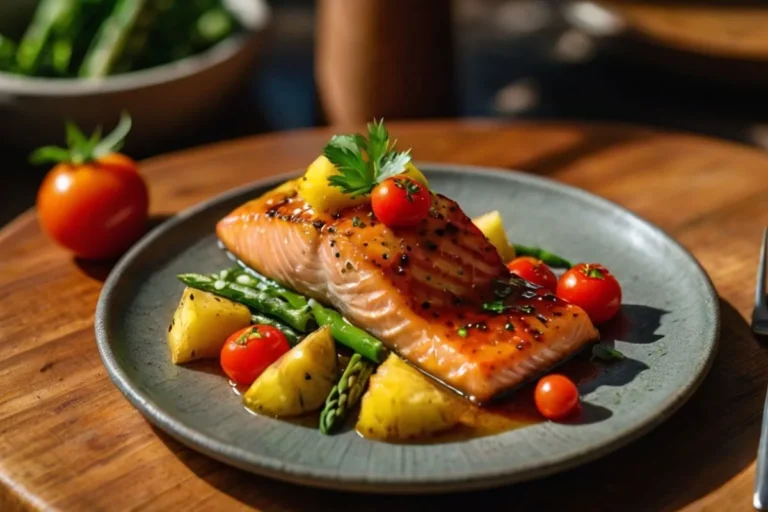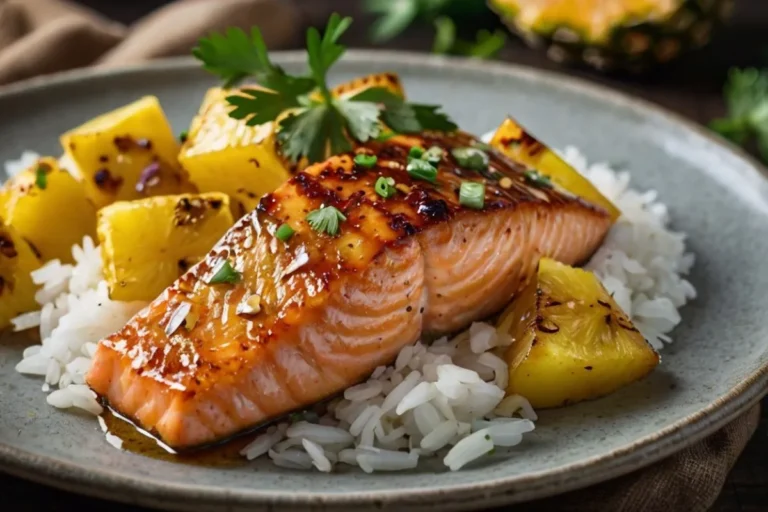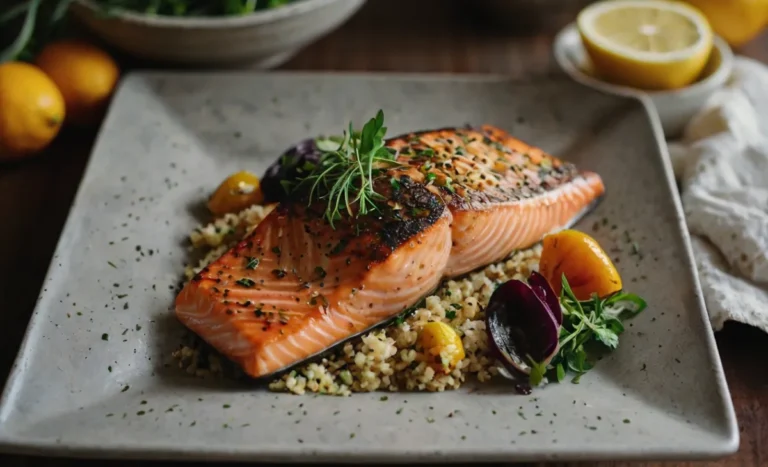Perfectly Baked Salmon Temperature: Secrets for Juicy and Delicious Results
Baking salmon to perfection is an art, and it all comes down to one critical factor: temperature. The right baked salmon temperature not only ensures a juicy, flavorful dish but also guarantees a delightful experience for you and your loved ones. Imagine serving salmon that flakes beautifully with a fork and melts in your mouth. This guide will walk you through every step to achieve that perfect result every time you bake salmon.
Understanding the Ideal Baked Salmon Temperature
When it comes to baking salmon, temperature plays a significant role in determining the final texture and flavor. You’ve probably wondered what the perfect baked salmon temperature is. According to the USDA, salmon is considered fully cooked when its internal temperature reaches 145°F (63°C). However, if you prefer a softer, medium-rare texture, aim for an internal temperature of 125–130°F (52–54°C). This balance allows the salmon to retain its natural juices while ensuring it’s safe to eat. Always use an instant-read thermometer to check the temperature accurately.

The Science Behind Cooking Salmon
You might be asking why temperature matters so much. Overcooking salmon leads to dryness, making it tough and less appetizing. On the other hand, undercooking poses food safety risks and may leave the fish tasting raw. Salmon’s natural fat content, particularly in varieties like Atlantic salmon, keeps it moist and flavorful when cooked properly. The right temperature allows the fats to melt into the meat, enhancing its tenderness and taste.
Preparing Your Salmon for Baking
Preparation is key to achieving perfectly baked salmon. Start by selecting high-quality fillets or steaks. Fresh salmon with firm, shiny flesh and a mild scent is ideal. Skin-on salmon is a great choice as it helps lock in moisture during the baking process. Once you have your salmon, focus on marinating and seasoning. A simple marinade of citrus, soy sauce, and olive oil can work wonders. Let the salmon rest for about 15 minutes after seasoning to allow the flavors to penetrate the flesh fully.
The Perfect Oven Settings for Baked Salmon
The oven temperature you choose impacts the cooking process. For best results, preheat your oven to 375–400°F (190–205°C). Lower temperatures around 375°F result in moist, tender salmon, while higher temperatures like 400°F give the edges a delightful crispiness. You can experiment with different baking methods, such as foil-wrapping for enhanced moisture retention or open baking for a firmer texture.
Baking Times Based on Salmon Thickness
Cooking time varies depending on the thickness of your salmon. A general rule of thumb is to bake salmon for 10–12 minutes per inch of thickness. To simplify this, here’s a quick reference table:
| Salmon Thickness | Baking Temperature | Cooking Time |
|---|---|---|
| 1 inch | 375°F | 10–12 min |
| 1.5 inches | 400°F | 12–15 min |
Using this table ensures you never overcook or undercook your salmon. Remember, the cooking time can also vary based on whether the salmon is fresh or frozen.

Checking for Doneness
Wondering how to tell if your salmon is perfectly cooked? The most reliable method is using an instant-read thermometer. Insert it into the thickest part of the fillet, and if it reads between 125°F and 145°F, your salmon is ready. Visually, look for opaque flesh that flakes easily with a fork. For those who prefer a hands-off approach, removing the salmon slightly before it reaches the target temperature allows carryover cooking to finish the job.
Delicious Seasoning and Serving Ideas
Baked salmon is versatile and pairs wonderfully with various seasonings and sides. Here are some popular flavor combinations:
- Lemon and Dill: A classic pairing that highlights the salmon’s natural flavor.
- Honey and Mustard: A sweet and tangy glaze that caramelizes beautifully.
- Cajun Spice Rub: Perfect for those who enjoy a bit of heat.
To complete your meal, consider serving your salmon with roasted vegetables like asparagus or creamy mashed potatoes. These sides balance the richness of the fish and add variety to your plate.

Nutrition Benefits of Baked Salmon
Not only is baked salmon delicious, but it’s also incredibly nutritious. Rich in omega-3 fatty acids, high-quality protein, and essential vitamins like B12 and D, salmon supports heart health, brain function, and overall well-being. Here’s a breakdown of its nutritional value:
| Nutrient | Amount per 100g |
| Calories | 206 |
| Protein | 22g |
| Fat | 12g |
| Omega-3 Fatty Acids | 1.5g |
These benefits make salmon an excellent choice for health-conscious individuals.
Common Mistakes to Avoid When Baking Salmon
Even experienced cooks can make mistakes when baking salmon. Here are some common pitfalls to steer clear of:
- Not Preheating the Oven: Preheating ensures even cooking from the start.
- Skipping the Thermometer: Guesswork often leads to overcooking or undercooking.
- Baking Straight from the Fridge: Let the salmon rest at room temperature for about 20 minutes before baking to promote even cooking.
Frequently Asked Questions about Baked Salmon Temperature
What temperature should salmon be baked at?
Salmon is best baked at 375°F to 400°F for optimal results. This range balances tenderness and flavor.
How do I keep baked salmon from drying out?
Using foil or butter to cover the salmon during baking helps retain moisture. Monitoring the internal temperature also prevents overcooking.
Can I bake frozen salmon without thawing?
Yes, you can bake frozen salmon, but you’ll need to add 5–10 minutes to the cooking time. Ensure the internal temperature reaches at least 145°F.
Conclusion: Perfecting Your Baked Salmon Every Time
Mastering baked salmon temperature is a skill that guarantees consistently delicious results. By following the tips and techniques outlined here, you can create salmon dishes that impress every time. From choosing the right temperature to experimenting with seasonings, the possibilities are endless. Now it’s your turn to bake salmon to perfection. Share your experiences and favorite recipes in the comments below—we’d love to hear from you!
